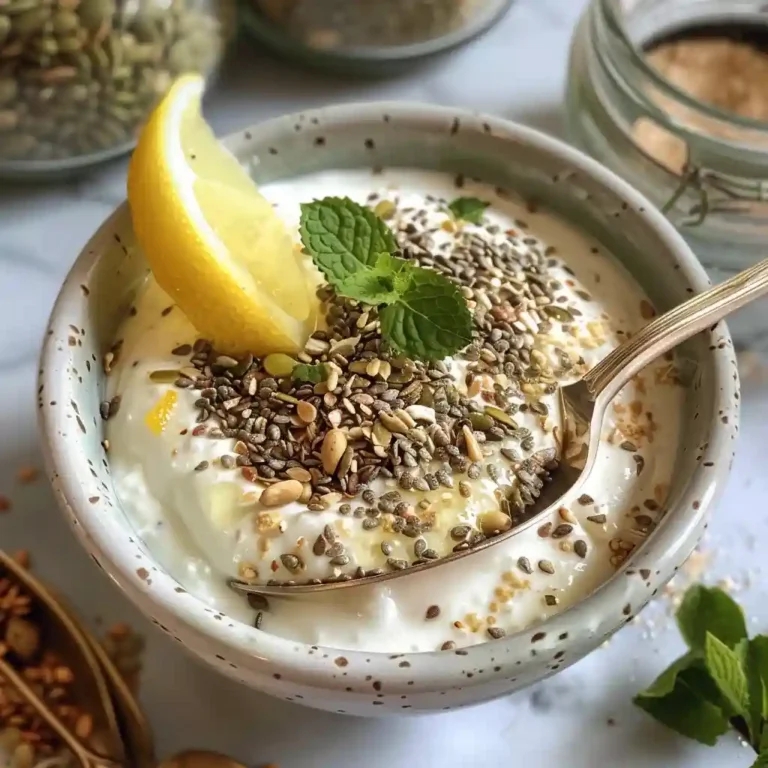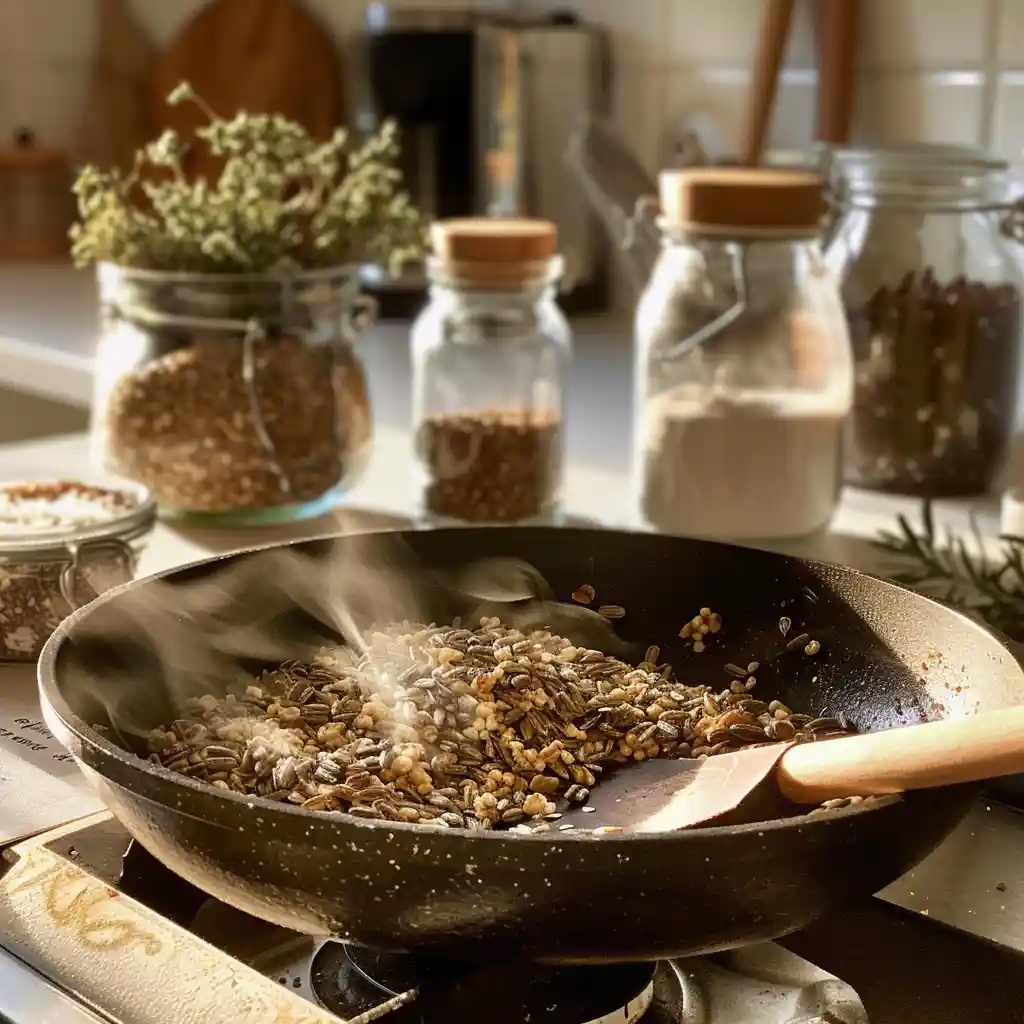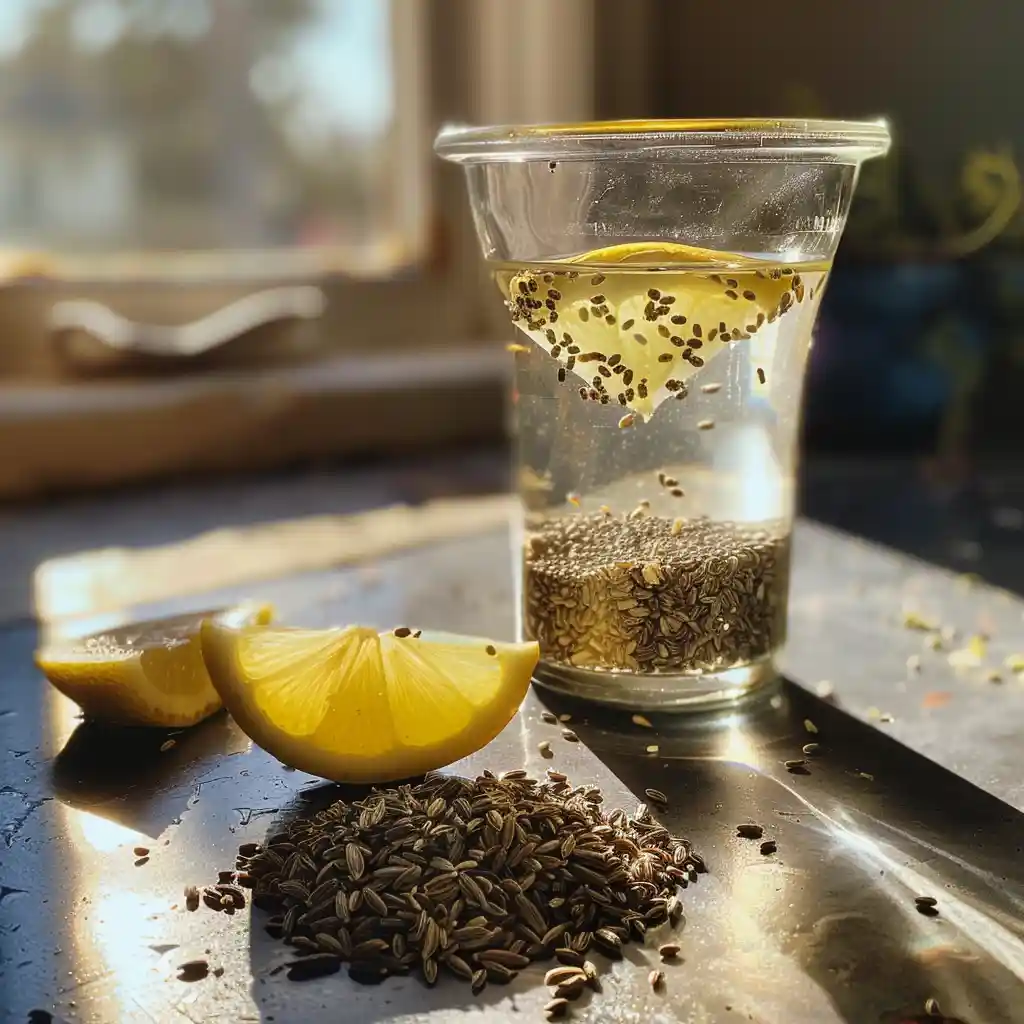Bariatric Seed Recipe for Weight Loss – A Simple, Proven Snack That Supports Your Goals
The first time I heard the term “bariatric seed recipe,” I was wandering through a wellness market in Mumbai, eyes wide at shelves lined with jars of tiny seeds—some familiar, some not. A kind-hearted vendor handed me a mix made from roasted flax, sunflower, cumin, and chia, and called it “weight wisdom in a jar.” That phrase stuck with me.
Back in my home kitchen, I began experimenting. I tweaked, tasted, and toasted. Eventually, I landed on a blend that wasn’t just high in fiber and protein, but actually fit my daily rhythm. This article is born from that journey.
If you’re trying to keep your meals light, snack smart, or simply feel better day by day, this recipe may be your new go-to. Often used by those on post-bariatric diets, this seed mix is a smart option for anyone who wants a natural, real-food snack that fits into a healthy lifestyle.
We’ll go deep into what makes this blend special, how I like to prepare and enjoy it, and how you can adapt it to your taste. Whether you sprinkle it over yogurt, stir it into water, or just munch it by the spoonful like I often do, you’ll find ways to make it yours.
Looking for inspiration? Try this homemade bariatric seed recipe for weight loss to see how I make mine step by step.
In the parts ahead, you’ll find:
- What bariatric seeds are and why they matter.
- My personal story with these seeds.
- A simple recipe that you can build your own routine around.
- Preparation tricks, seed water variations, and expert-backed usage tips.
- And finally, a section with your most-asked questions answered.
So grab a spoon and let’s talk seeds—tiny but mighty tools in your wellness journey.
Print
Bariatric Seed Recipe for Weight Loss
A simple, fiber-rich seed blend designed to support digestion and satiety—ideal for post-bariatric meals or anyone focused on natural, healthy snacking.
- Total Time: 10 minutes
- Yield: 10 servings 1x
Ingredients
- 2 tablespoons flaxseeds
- 1 tablespoon fennel seeds
- 1 tablespoon cumin seeds
- 1 tablespoon chia seeds
- 1 tablespoon sunflower seeds
Instructions
- Dry-roast the fennel, cumin, and sunflower seeds in a pan over medium heat until aromatic.
- Allow the roasted seeds to cool completely.
- Combine the roasted seeds with flaxseeds and chia seeds in an airtight jar.
- Store in a cool, dry place for up to 1 month.
- Use a spoonful daily—eat dry, mix into yogurt, or soak overnight in water for a gentle morning tonic.
Notes
This seed mix is versatile—sprinkle over salads, stir into soups, or soak overnight for a soft, pudding-like texture. Great for digestion and post-meal satisfaction.
- Prep Time: 5 minutes
- Cook Time: 5 minutes
- Category: Snack
- Method: No-Cook
- Cuisine: Health & Wellness
Nutrition
- Serving Size: 1 tablespoon
- Calories: 60
- Sugar: 0g
- Sodium: 1mg
- Fat: 4g
- Saturated Fat: 0.5g
- Unsaturated Fat: 3.5g
- Trans Fat: 0g
- Carbohydrates: 2g
- Fiber: 2g
- Protein: 2g
- Cholesterol: 0mg
What Is a Bariatric Seed Recipe?
When I first came across the term bariatric seed recipe, I was intrigued. I knew seeds were healthy, but I had no idea there was a specific mix being called that. Turns out, a bariatric seed recipe refers to a thoughtfully combined blend of seeds that are high in fiber, low in carbohydrates, and packed with plant-based protein. It’s often used by people who’ve undergone bariatric surgery, but honestly, this recipe is just as useful for anyone trying to support digestion and manage weight with real food.
So what makes this blend unique? It’s the combination of flaxseeds, cumin, fennel, chia, and sometimes sunflower or pumpkin seeds—all known to support satiety and gut health. These aren’t just random seeds thrown together. Each one has a purpose in the bariatric seed recipe, whether it’s to provide essential fatty acids, aid digestion, or support healthy blood sugar levels after meals.
From my experience, the key difference with a bariatric seed recipe is the balance. It’s not just about tossing a handful of chia into your smoothie. It’s about creating a mix that works in harmony, giving your body what it may need during weight management or post-surgery recovery—without processed fillers or sugars.
You don’t have to be on a strict diet to benefit. I often snack on a spoonful mid-afternoon or sprinkle it over salads or soups. The flavor is nutty, slightly earthy, and when roasted gently—it’s downright addictive.
If you’re curious about how to build your own, check out this breakdown of what a bariatric seed recipe includes to get a closer look at the core ingredients and their traditional uses.
My Personal Story With Bariatric Seeds
I stumbled upon the bariatric seed recipe in the most unexpected way—while backpacking through Kerala, India. A local Ayurvedic café served me a tiny clay cup filled with warm seed tea, followed by a small dish of roasted seeds. The owner told me it was part of a traditional post-meal ritual to support digestion. That was my introduction to the idea that a bariatric seed recipe could be more than just nutritious—it could be soulful and satisfying, too.
Back home, I started experimenting with my own blend. I didn’t just want to copy a recipe—I wanted it to fit into my day and actually make me feel good. I remember trying several variations: one was too gritty, another too bitter. But one morning, I got it right. I roasted flaxseeds, fennel, and cumin, added raw chia and sunflower seeds, and let the mix rest overnight. The result was a bariatric seed recipe that felt like a natural extension of my meals—light, energizing, and easy to digest.
I’ve used it during stressful weeks, lazy Sundays, and even as part of my post-travel reset. The most surprising part? How easily this little mix replaced processed snacks in my pantry. It gave me something wholesome to reach for during cravings, and somehow that simple shift made a big difference in how I approached food.
What I love about making a bariatric seed recipe at home is the flexibility. You’re not tied to a strict formula. You can toast, blend, or hydrate the seeds. Some days I eat them dry with a spoon, other days I soak them overnight and enjoy the jelly-like texture in the morning.
If you’re looking to create your own version or want inspiration from what worked for me, don’t miss this bariatric seed ritual guide that shows how to make it part of a meaningful daily habit.
Why Choose This Bariatric Seed Recipe?
There are hundreds of snack options out there, but very few can match the simplicity and balance of a bariatric seed recipe. What sets this apart is how minimal ingredients can work together to support better eating habits. It’s not flashy or trendy—it’s just real food, doing what it’s supposed to do.
Most of the snack mixes I tried before were either too sweet, packed with dried fruits, or high in carbs. The bariatric seed recipe avoids those traps. It focuses on seeds that are naturally low in carbohydrates and high in fiber, which may help you feel full longer. For me, that alone made it a smarter choice during mid-day cravings or late-night snacking.
Another reason I lean on this bariatric seed recipe is its nutrient density. Flaxseeds offer omega-3s, chia seeds deliver that satisfying gel texture when soaked, and cumin brings in a warm, digestive-friendly flavor. These aren’t just empty fillers—they each have a purpose. Over time, I’ve found that this mix keeps my energy steady without the ups and downs I used to get from energy bars or protein cookies.
From a preparation standpoint, it’s one of the easiest things you can make. There’s no baking, no blending—just a quick roast and a jar to store it. Plus, it lasts for weeks and travels well, which makes it perfect for people on the go. If you’re following a lower-carb eating style or simply want a no-nonsense snack, this bariatric seed recipe checks all the boxes.
Discover great ideas like this bariatric seed texture trick if you want to improve how the seeds feel in your mouth. That tiny change transformed how I enjoy mine.
Ingredients and How To Make Bariatric Seed Recipe
You don’t need fancy tools or exotic ingredients to make a satisfying bariatric seed recipe. That’s what makes it so rewarding—it’s real, homemade, and flexible. My go-to version uses just five pantry staples: flaxseeds, fennel, cumin, chia seeds, and sunflower seeds. Each one brings something important to the table—fiber, texture, or a subtle flavor boost that ties it all together.

Here’s how I prepare my bariatric seed recipe at home:
- I start by dry-roasting the fennel, cumin, and sunflower seeds in a pan until they release that warm, nutty aroma.
- Once they cool, I mix them with raw flax and chia seeds in an airtight jar.
- That’s it—no oil, no salt, no extra fluff.
This bariatric seed recipe keeps well for up to a month, and I use it in all kinds of ways. A spoonful in the morning with warm water, stirred into yogurt, or even mixed into salads for crunch. On days when I feel bloated or sluggish, I soak a tablespoon overnight and drink it as a gentle morning tonic.
If you’re wondering where to start, try this homemade bariatric seed drink recipe. It’s a great intro if you’re easing into the world of seed-based wellness.
Whether you’re preparing for weight management or just curious about whole-food blends, crafting your own bariatric seed recipe is a great first step. You’ll save money, avoid unnecessary additives, and gain a little kitchen confidence along the way.
How To Make Seed Water for Weight Loss
One of the easiest ways I’ve found to use my bariatric seed recipe is by turning it into a seed water infusion. On days when I feel heavy or want something light but nourishing, this drink gives me just enough to feel refreshed without overdoing it. It’s also become a part of my morning ritual, especially after travel or big meals.

To make seed water using the bariatric seed recipe, I soak one tablespoon of the mix in a glass of water overnight. By morning, the chia seeds swell up into little orbs, the cumin softens, and the flavors mellow into something soothing and hydrating. I usually stir it well and drink it on an empty stomach. It’s gentle on the system and leaves me feeling light.
Many people use this method as a supportive step during a digestive reset or mindful eating plan. The real beauty of using a bariatric seed recipe this way is that you get hydration and fiber together—something that’s not always easy to combine.

If you’re new to soaking seeds, check out this chia-based drink recipe for an easy variation. You can even add lemon or mint for a little flair.
No matter how you enjoy it, seed water made from your bariatric seed recipe offers a slow, natural start to the day. It’s simple, real, and something your body might actually thank you for.

Health Benefits of This Seed Recipe
From my experience, the bariatric seed recipe isn’t just about cutting calories or feeling full—it’s about building small, sustainable habits. Each seed plays a unique role in supporting the body. Flax and chia provide soluble fiber, which may help support digestion and natural elimination. Fennel and cumin, commonly used in traditional wellness practices, can be calming to the stomach after meals.
When I started incorporating a bariatric seed recipe into my day, I noticed fewer cravings and a lighter, more balanced feeling overall. I didn’t expect something so small to have such an impact, but over time, those little choices added up. Seeds are known for their ability to provide steady energy without spiking blood sugar—a huge win when you’re trying to eat with intention.
Another powerful benefit of this bariatric seed recipe is its convenience. You’re not reaching for supplements or pre-packaged diet snacks. You’re using whole, unprocessed ingredients that are easy to source and even easier to prepare. It gives me a sense of control in a world filled with ultra-processed foods.
Many cultures have leaned on similar blends for generations. Whether it’s post-meal seed chewing in India or herbal infusions across the Mediterranean, this approach isn’t new—it’s simply being rediscovered in a modern way.
If you’re curious about the deeper story behind these ingredients, this article on seed-based rituals might offer a fresh perspective.
A bariatric seed recipe won’t solve everything overnight, but it might help you feel just a little more grounded—and that’s a pretty good place to start.
Tips for Getting the Most Out of Bariatric Seeds
When I first started making my own bariatric seed recipe, I kept it on a high shelf, thinking I’d use it only now and then. But the more I experimented, the more it became part of my daily flow. The trick wasn’t just about what went into the mix—it was how I used it, when I used it, and how I stored it to keep it fresh and flavorful.
For storage, I learned to always keep my bariatric seed recipe in a cool, dark place inside an airtight glass jar. It helps retain the nutty aroma and keeps the oils in the seeds from turning bitter. I roast the seeds in small batches once a week so they stay fresh. If I ever notice a change in smell or texture, I know it’s time for a new batch.
Timing is everything. I find it works best when I enjoy my bariatric seed recipe first thing in the morning or about 30 minutes before a meal. It gives me that grounded, satiated feeling that makes me less likely to overeat. On days when I know I’ll be out and about, I carry a little jar with me for a quick scoop when hunger strikes.
One thing that changed everything? Learning how texture affects enjoyment. I used to eat it dry and found it a bit intense. But soaking it overnight softened the mix and made it feel like a soothing ritual instead of a task. That small shift made my bariatric seed recipe feel more like a treat than a diet food.
If you want to tweak the texture of your mix, don’t miss this page that helped me rework my routine. Little adjustments make a big difference.
How To Eat Bariatric Seed Mix for Weight Loss
There’s no single way to enjoy a bariatric seed recipe, and that’s part of the magic. At first, I kept it basic—just a spoonful after meals. But over time, I discovered how versatile it really is. Whether dry or soaked, the mix adapts to your routine without demanding much effort.
If you’re on the go, dry is easiest. Just keep a small jar in your bag and take a spoonful when you feel a craving coming on. The crunchiness of a dry bariatric seed recipe makes it feel satisfying, almost like a mini snack. But on days when I have a bit more time, I soak a tablespoon in warm water overnight. By morning, it has a soft, pudding-like consistency that feels gentle and nourishing.
You can also sprinkle the mix into salads, oatmeal, or smoothies. When I’m short on time, I stir it into Greek yogurt with a drizzle of honey. It adds fiber, texture, and a little bit of flavor depth without overpowering the dish.
Some friends of mine prefer it blended into shakes for a post-workout boost. Others take it before meals to help curb their appetite. The flexibility of a bariatric seed recipe makes it easier to stick with your goals without feeling restricted.
If you’re looking for inspiration beyond plain seed water, I’d recommend this detailed bariatric seed tea recipe that gives a warm and comforting twist to your daily intake.
Over time, I’ve realized that eating a bariatric seed recipe consistently—even in small amounts—has made a bigger impact than I expected. It’s not about extremes, but about small, repeatable habits that feel good and fit real life.
FAQs About Bariatric Seed Recipe
What is the best seed for weight loss?
In my experience, there’s no single best seed—it’s all about the combo. That’s why the bariatric seed recipe works so well. Flaxseeds offer fiber and omega-3s, chia seeds expand and help you feel full, while fennel and cumin have been traditionally used to support digestion. Each seed plays its part, making the mix more effective together than any single one alone.
If you’re new to this, don’t miss this bariatric seed drink guide that walks you through the steps in more detail.
Conclusion
Looking back, I never expected a mix of tiny seeds to become such a steady part of my wellness routine. But this bariatric seed recipe isn’t just a snack—it’s a small act of care I repeat daily. It helps me stay on track without feeling deprived, and it’s easy to prepare, store, and adapt to whatever the day brings.
Whether you’re trying to feel lighter, improve your digestion, or find a better alternative to sugary snacks, a bariatric seed recipe offers a grounded, real-food solution. And the best part? You can personalize it. No strict measurements or complicated tools—just you, your favorite seeds, and a little intention.
I still keep a jar on my kitchen shelf, always ready to stir into water, sprinkle on breakfast, or enjoy by the spoonful. It’s not flashy, but it works. And over time, those small wins begin to add up in a big way.
If you’re serious about starting your own journey, don’t miss our guide to building a lasting seed-based habit.
Don’t miss our Pinterest board for more seed-based recipes and follow me on Facebook for even more practical tips straight from my kitchen to yours.
This recipe is shared for informational purposes and is not a substitute for medical advice.
Final Thoughts on Using a Bariatric Seed Recipe
The more time I spend in the kitchen, the more I appreciate simplicity—and a bariatric seed recipe fits right into that mindset. It’s one of the few things I can prepare in under 10 minutes and rely on throughout the week. Whether I’m in a rush, winding down after dinner, or looking for something light in the afternoon, this little mix of seeds is always there for me.
When you create your own bariatric seed recipe, you’re building more than just a snack. You’re creating a habit that can gently support your health goals, one spoonful at a time. It’s not about restriction or quick fixes—it’s about slow, consistent choices that feel good and nourish your body.
I often get asked if the mix ever gets boring, and honestly, it doesn’t. I play around with spices like ajwain or ajmo when I want variety. And the best part? You don’t need to be a chef to get it right. If I can do it, anyone can.
Try starting with small portions and gradually make it your own. You’ll likely be surprised how easy it is to keep this bariatric seed recipe in your daily rhythm. From a travel snack to a morning ritual, it’s one of the most versatile—and reliable—blends I’ve ever made.







